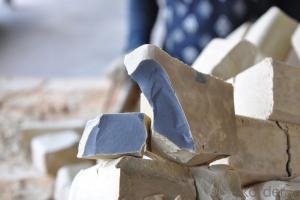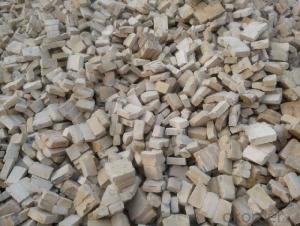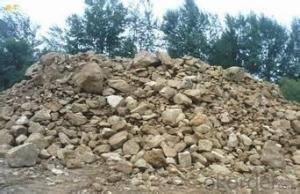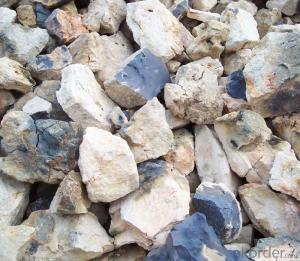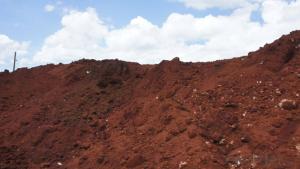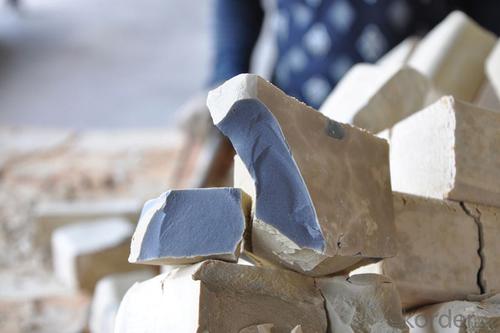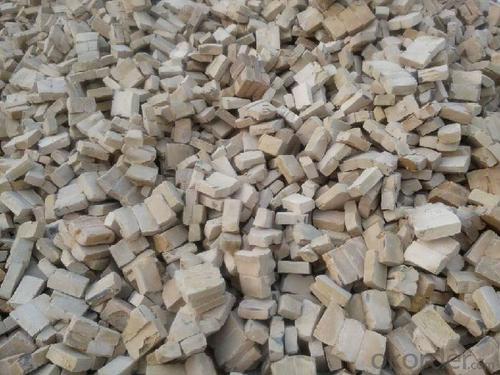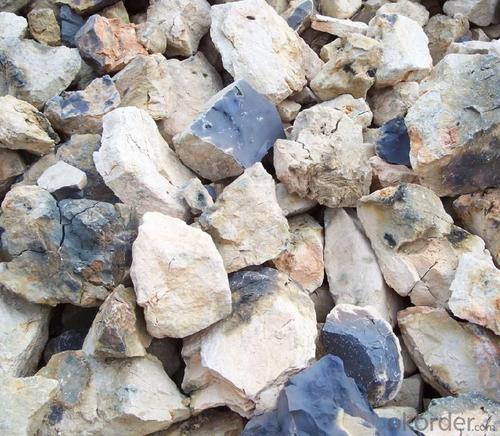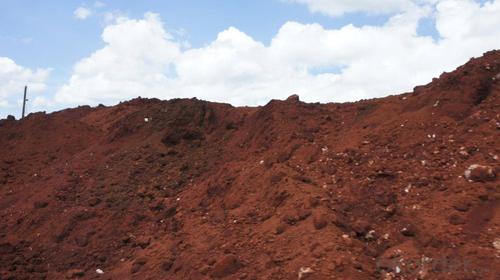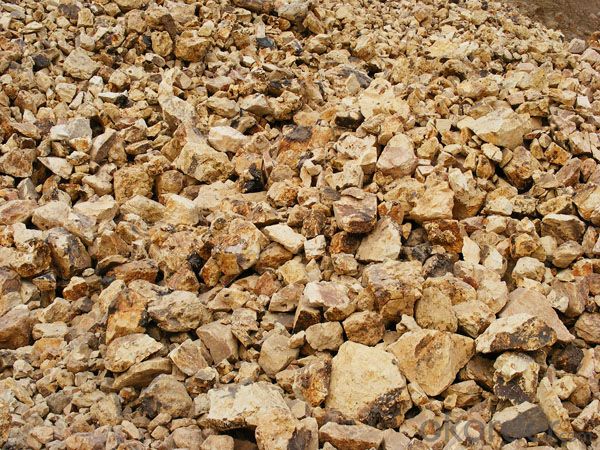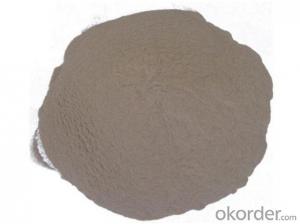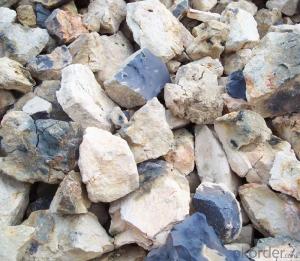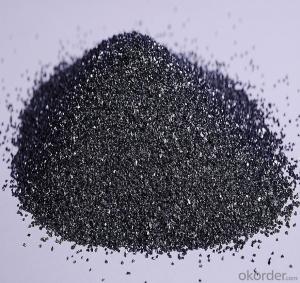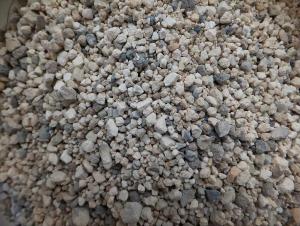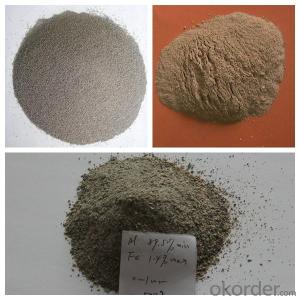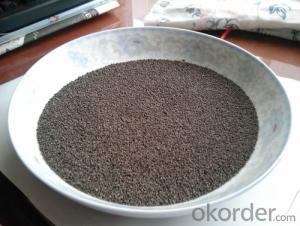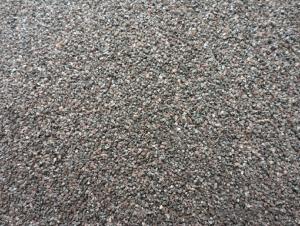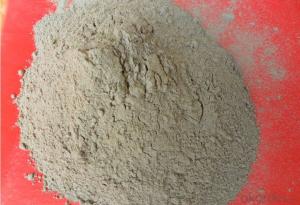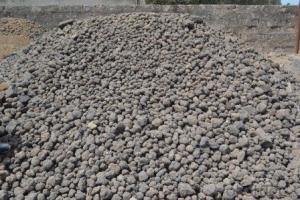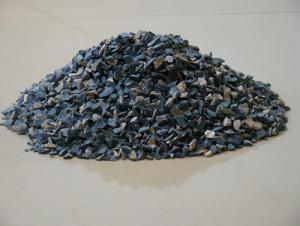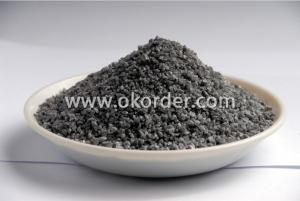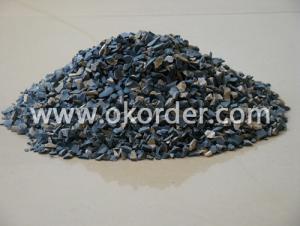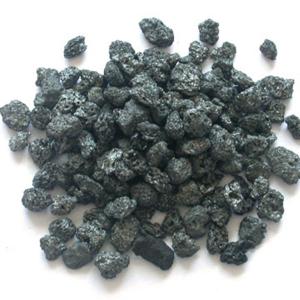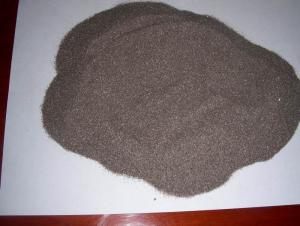Raw Materials for Refractory:Factory Direct 85% Al2O3 1-3mm Calcined Bauxite with Low Price
- Loading Port:
- Tianjin
- Payment Terms:
- TT or LC
- Min Order Qty:
- 25 m.t.
- Supply Capability:
- 12000MT/MONTH m.t./month
OKorder Service Pledge
OKorder Financial Service
You Might Also Like
Factory Directly 85% Al2O3 1-3mm Calcined Bauxite with Low Price
1.Calcined Bauxite Description
A general term for a rock composed of hydrated aluminum oxides. It is the main ore of alumina to make aluminum. Also used in the production of synthetic corundum and aluminous refractories. The bauxite is purified by the Bayer Process. First the ore is mixed with a hot concentrated solution of sodium hydroxide. The NaOH will dissolve the oxides of aluminum and silicon but not other impurities such as iron oxides, which remains insoluble. The insoluble materials are removed by filtration.
2.Main Features of the Calcined Bauxite
Calcined bauxite is one of the principal ore of aluminum. Calcined bauxite contains hydrous aluminum oxides and aluminum
hydroxides, formed through the laterization of aluminous rocks in tropical and subtropical areas .Calcined bauxite is obtained by calcining (heating)superior grade bauxite at high temperature (from 85OC to 1600C) .This removes moisture there. By increasing the alumina content,compared to an alumina content of about 57%to 58% in raw bauxite, calcined bauxite has an alumina content of 84%to88%.The heating is carried out in rotary kilns.
3.Main usage of the Calcined Bauxite
calcined bauxite is typically calssified according to its intended commercial application,such as abrasive ,cement , chemical l, metallurgical, and refractory .as raw material for use in high alumina and super duty refratory bricks and shapes ,plastics ,castable refratory, motors, gun mixes, ramming mixes, abrasive grains and other products chemical composition .
4. Calcined Bauxite Images
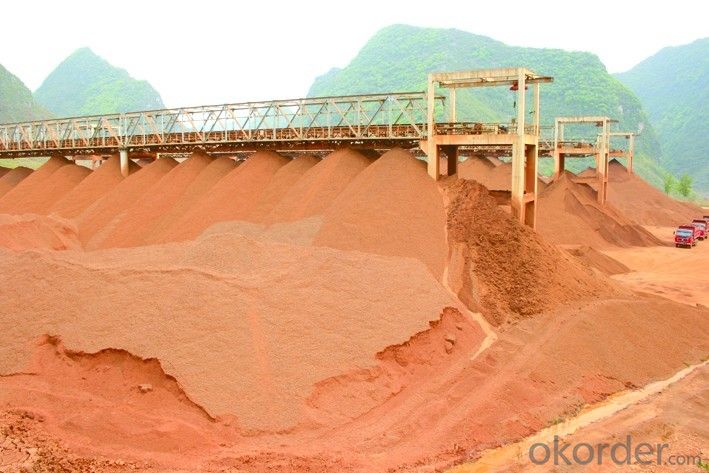
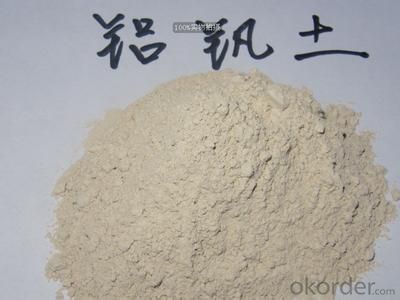
5. Calcined Bauxite Specification
| Brand | CNBM |
| Bulk Density | High Density |
| Production Capacity | 210,000 Tonnes per Year |
| Mesh | 20-40 mesh |
| Raw Material | Bauxite |
| Standard | API RP 19C |
| Place of Origin | China |
| Year of Manufacture | 2012 |
| Certifications | ISO 9001:2008, API Q1 |
| Test Reports | Stim-Lab, Frac-tech |
| Application | Hydraulic Fracturing for Oil & Gas Wells |
6.FAQ of Calcined Bauxite
1). Q: Are you a factory or trading company?
A: We are a factory.
2). Q: Where is your factory located? How can I visit there?
A: Our factory is located in ShanXi, HeNan, China. You are warmly welcomed to visit us!
3). Q: How can I get some samples?
A: Please connect me for samples
4). Q: Can the price be cheaper?
A: Of course, you will be offered a good discount for big amount.
- Q: Can someone professionally introduce the classifications of refractories?
- It can be divided into two categories of ordinary and special refractory. Ordinary refractories can be devided into acidic, neutral and alkalinee refractories according to chemical properties. Special refractory can be devided into high temperature oxide, refractory compounds and high-temperature composite materials according to the compositions. Furthermore, it canbe devided into ordinary refractory products (1580 ~ 1770 ℃), advanced refractory products (1770 ~ 2000 ℃) and super refractory products (above 2000 ℃) according to the strength of refractoriness. It can be divided into bulks (standard brick, special-shaped brick, etc.), special shape (crucible, sagger, pipe, etc.), fibrous (aluminum silicate, zirconia and boron carbide, etc.) and Indefinite shape (refractory clay, castableand ramming mass, etc.) according to the shapes of products. According to the sintering process, it can be divided into sintered products, cast products, melting jetting products.
- Q: The mechanism and function of antioxidants in carbon containing composite refractories are briefly described.
- With the advantages of carbon refractories especially excellent slag resistance and high heat stability, but graphite under high temperature oxidation, in order to improve the oxidation resistance of carbon composite refractory materials, often adding a small amount of antioxidants, to improve the oxidation resistance of carbon composite refractories. Antioxidant additives commonly used in metal powder, silicon powder, magnesium powder, silicon carbide powder and so on.
- Q: How to choose thermal insulation materials for flood heating?
- 1, Select the appropriate floor material suitable for radiant floor heating. The floor radiant heating system mainly transfer heat through the ground concrete and the ground material to the room. Therefore in the heating season the ground material will always be heated during heating season. Therefore, it is better to choose stone materials and compround floor plate insensitive to tenmperature change with good heat dissipation and functions. Currently, wood floor is not suitable for the ground radiant heating system. 2, choose the pipe with anti permeability performance. Plastic floor heating pipe itself has a certain air permeability, if oxygen penetrates in it is prone to oxygen erosion and system's mental device will be eroded, resulting in the risk of leakage. Therefore in order to ensure the reliable operation of the heating system, the selected pipe must have anti oxygen permeation performance, and meet the standard stipulated by the DIN4726 oxygen permeation quantity: and be less than 0.1mg\L.d at 40 C.
- Q: The difference between refractory and thermal insulation material
- Refractory refers to inorganic non-metallic material, whose refractoriness is not less than 1,580℃, but refractory is not necessarily insulated material. Inorganic thermal insulated material also belongs to refractory as long as its refractoriness is higher than 1,580℃.
- Q: I want to know what is the slim in the refractory bricks
- Where are you from, I can introduce to you
- Q: Selection of refractory materials?
- Inorganic non-metallic material with a refractoriness of more than 1580 degrees. Refractoriness refers to the temperature of a sample of a refractory cone, which is resistant to high temperature without softening, and does not soften and melt down. Refractory materials are associated with high temperature technology, which originated roughly from the middle of the bronze age. In the Eastern Han Dynasty has made China kiln firing porcelain material and with fireclay refractory sagger. In the early twentieth Century, refractory materials were developed towards high purity, high density and ultra high temperature products. At the same time, unshaped refractory materials and refractory fibers without firing and energy consumption were developed. With the development of modern technology, atomic energy, space technology, new energy technology, refractory material having high temperature resistance and corrosion resistance, thermal shock resistance, erosion resistance and other comprehensive excellent performance has been applied.
- Q: What are the chemical composition of refractory cement?
- Calcium aluminate prepared by calcining as the main component. Aluminate cement takes bauxite and limestone as raw materials, alumina content of about 50% as the clinker. And it is a hydraulic cementing material made by grinding. Refractory cement is also known as aluminate cement.
- Q: What is the fire endurance of fireproof glass cotton?
- of course,A level is better. A-class is non-combustible, class B is fire retardant, rock wool fire resistance is 800 ℃, glass wool fire resistance is 450 ℃ , class B has a relatively better thermal insulation effect, hope it can solve your doubts.
- Q: What are the materials of class A fire resistant window?
- Fixed class A fire resistant window should be made up of steel frame, steel casement, and fireproof glass. Fire windows, made up of steel frame, steel casement, and fireproof glass, refers to window that isolate and stop the fire from spreading. Fire window is named according to the main materials of the frame and casement. Window frame is made up of steel and casement wood, vise versa. I hope it is useful.
- Q: What's the material of fireproof and wear-resisting floor?
- It is the kind of special concrete floor, and it should prevent from crash for it will produce fire by friction. It is mostly used for the warehouses storing explosive and inflammable objects and chemical materials. And its production process is the same with that of the common concrete floor, but it uses different material which needs to be the pebbles and sand after processing with marbles and dolomite.
Send your message to us
Raw Materials for Refractory:Factory Direct 85% Al2O3 1-3mm Calcined Bauxite with Low Price
- Loading Port:
- Tianjin
- Payment Terms:
- TT or LC
- Min Order Qty:
- 25 m.t.
- Supply Capability:
- 12000MT/MONTH m.t./month
OKorder Service Pledge
OKorder Financial Service
Similar products
Hot products
Hot Searches
Related keywords
